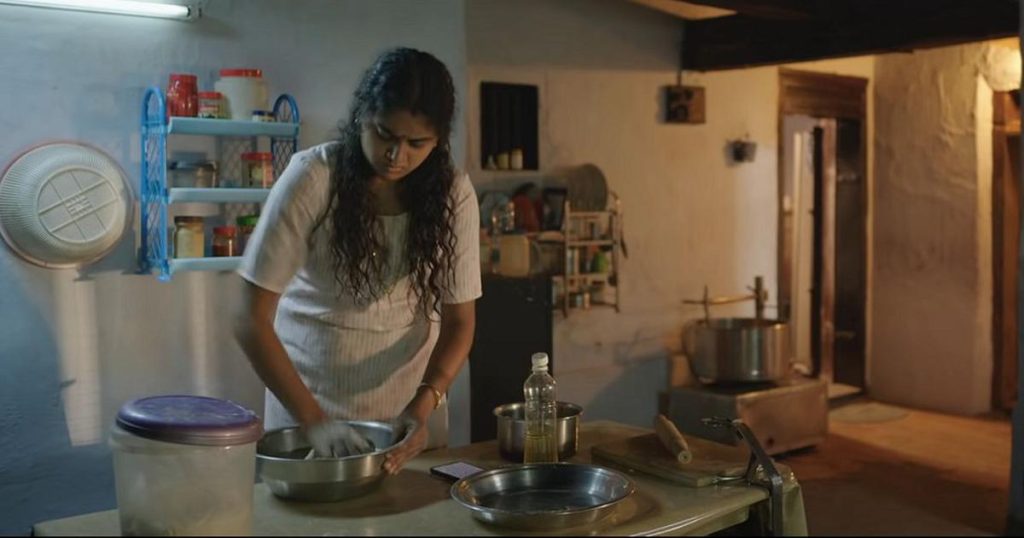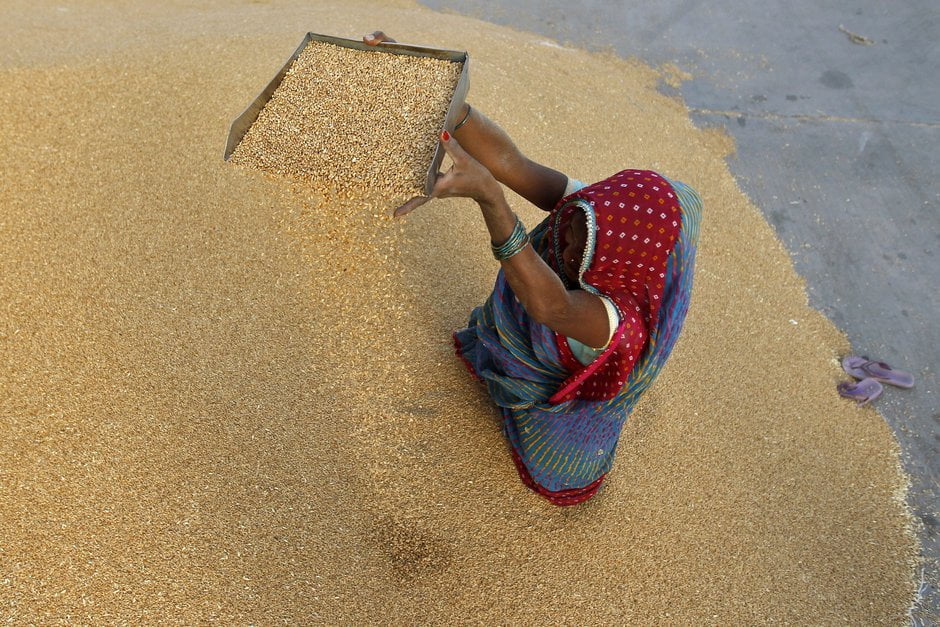Middle-class, heteronormative, patriarchal homes in India continue to associate greater value to their bread-earning male members than their women. Women are continually devalued socially and culturally, and this negatively impacts how they perceive and construct their self-image. In deeply patriarchal societies and cultures such as in India, women’s food practices are often influenced by the positions they are groomed to overtake (as mothers, nurturers, caregivers) within domestic spheres throughout their lives.
Within middle-class and economically disadvantaged homes where wasting food is not an option, the burden of finishing stale, refrigerated or discarded food often falls on its women. Women are therefore culturally and psychologically conditioned by their habitual, performative roles to enjoy and claim leftovers. While the patriarchal society insists on lauding women for their ‘altruistic,’ food choices, it adversely impacts women’s nutrition, dietary and emotional needs.
Forgotten favourites
Women in Indian households are often the ones who cook the meals for the family. They mould the menu everyday according to the tastes and preferences of the male members of the family, and in the process, often forget the recipes that they enjoy. In a recent Instagram reel by ‘The Kindness Meal,’ an organisation which aims to revive old and forgotten Rajasthani recipes, Dipali reveals how the women that she converses with during her research claim to have not cooked the dishes that they cherish for over 20 or 30 years. Such recipes which are passed on orally from one generation of women to the next come under the threat of being lost forever.

The 2023 Kiran Rao film, Laapata Ladies portrays a similar touching scene, where the male protagonist’s mother acknowledges that the food in the house is always cooked according to the preference of their men, so much so that she has now forgotten her tastes and preferences, “Dikkat toh e hai ki humko toh woh bhi yaad nahi ki humko ka pasand hai” (The problem is, I don’t even remember the dishes I once used to enjoy).
Power is a prerequisite which determines one’s ability to express and implement one’s ‘taste,’ while making choices. Gender disparity within the domestic sphere ensures that the power and agency of making the ultimate choice resides with men. Moreover, slogging hours in the kitchen, women many a time view cooking dishes for themselves as a waste of time, energy and resources. A traditional family might also view their experimental dishes as wasteful and consider it an indication of their neglect towards their ‘duty,’ to provide familiar meals and uphold the familial ‘legacy.’
Food and gender economic disparity
Growing up in patriarchal households where the daughters see their mothers privilege the tastes of their husbands and sons over their own later translates into their subconscious patterns and behaviours. One of the most important causes that contributes to this is the gender economic disparity. Stay-at-home women frequently feel that they do not deserve good food, since they are not the ones bringing the bacon home.

The 2022 Ministry of Statistics and Programme Implementation (MOSPI) data indicates that only 30 per cent of India’s women population participates in the employment sector, “…women spent more time in unpaid activities than men and men devote more time on self-care and self-development than women…. Women spending 1/4th of the time spent by men in paid activities indicate low participation of men in the employment sector.” The MOSPI report also highlights the gender parity in women’s access to education. This reveals that many women in India neither have the means to understand the importance of a nutritional diet, nor financially secure it.
Mothers and wives of middle-class and economically disadvantaged households are consequently often seen finishing the food on the plates of their family members. While this behaviour is also driven by a need to minimise food waste, it is important to ask why the onus of it falls solely on women’s shoulders.
The immediate family — and by extension, society — devalues the unpaid labour of stay-at-home mothers, and the woman in question simultaneously is always made to feel that she does not deserve food of a higher nutritional value. This is reinforced by practices such as serving the food first to the male members of the family.
In a 2020 research article on gender and food consumption, Poulomi Roy notes, “In a patriarch[al] country like India, men and boys get more priority in getting a served meal. Socio-economic inequalities in men and women often contribute to malnutrition. The risk of undernutrition is more in women and girls than men and boys.” Households often overlook the nutritional needs of their women. Being the last ones to eat any meals, women try to make do with the leftovers. These habits lead to the creation of an affinity for cold and discarded food.
Mothers and wives of middle-class and economically disadvantaged households are consequently often seen finishing the food on the plates of their family members. While this behaviour is also driven by a need to minimise food waste, it is important to ask why the onus of it falls solely on women’s shoulders.
Women’s altruism and nutrition
A 2020 Tata-Cornell Institute (TCI) research found that women’s diet diversity scores in India are significantly lower than the rest of their family members. The news report on the study reveals, “Crucially, the differences in dietary diversity are concentrated in micronutrient-dense food groups, like dairy, meat/fish/poultry, green leafy vegetables, and vitamin A-rich fruits and vegetables. In other words, while households may have access to some nutritious foods, many women are not eating them.” Though these trends become more prominent in a period of scarcity such as during the Covid-19 lockdown, such practices continue to thrive within patriarchal households.
‘Sacrifice,’ is further considered to be an important characteristic trait of an ‘ideal housewife,’ in India. It is glorified as a ‘true,’ marker of her ‘feminine virtue.’ Even today, Mother’s Day posts shared on popular media romanticise the ‘sacrifices,’ ‘selflessness,’ and ‘nurturing spirit,’ of women. Women are often shamed if they do not possess these ‘qualities.’ These parameters also influence women’s relationship with food.

In the 2015 Bengali film Bela Sheshe, for instance, the elderly protagonist in a conversation with her husband proving her love for him mentions, “Khabar por, kheye uthe je machher chhal gulo tumi phele dao, jeyta tumi khaona, ami Konok ke boli ota phele na dite. Ota ami khai, ota amar obbhash… ei obbhash gulo e amar kache prem” (I ask Konok to not discard the fish scales that you throw away after eating. I eat those, it is my habit to do so… These habits are an expression of my love towards you). The popular saying ‘pati ka jhoota khane se pyaar badhta hai,’ (Eating your husband’s leftovers will increase the love between you two) similarly operates on this sexist notion.
Women’s ‘sacrifice,’ also extends to food portions. Being told all their lives that self-sacrifice is the purest form of affection that they can show towards their family, women develop a propensity towards performing such acts. A 2023 viral video reinforced these ‘ideals,’ where a married young couple is seen eating dinner together. Upon realising that the casserole is empty, the wife goes on to surreptitiously offer rice from her plate to her unnoticing husband who continues to scroll through social media on his phone for the entire duration of the video.
Titled “Only Indian [wives] can do this,” this video reveals how regressive food practices that undermine the value of women continue to plague contemporary Indian society.
Several studies indicate that women’s nutritional and dietary needs frequently remain unaddressed in India. The lack of proper period education and the prevalence of myths relating to the kinds of food prohibited during this period during one’s menstrual cycle adds to the problem of improper nutrition. Several cultures in India demand the seclusion of women during their period and impose dietary restrictions on them that are not backed up by science.
Similarly, pregnancies and postpartum care also prescribe and forbid several foods for women during that period. Very early in their lives, women’s relationship with food begins to be influenced and determined by cultural and sociological practices in ways that men never experience. Despite such strict restrictions and regulations, the diets of women in India are alarmingly nutrient-low.
While it appears as if women have autonomy within the kitchen while making food choices for the entire family, her psychological conditioning limits her choices to those dishes that please other members of the family. Moreover, in homes that continue to prioritise their men over their women, women are often shamed for expressing their tastes and food preferences. Daughters are from a very young age taught to save the best cut of meat for their brothers or fathers. As mothers and wives, women continue to prepare fresh food for the men of their household while they finish leftovers and refrigerated food.
Romanticised notions of women’s ‘inherent altruistic,’ tendencies pose a threat to progressive attempts of women to rework and redefine their subjecthood. The dearth of research on the implications of the psychological conditioning of women that influences their food practices further highlights that these nuances remain invisible to the larger patriarchal society.
About the author(s)
Madhusmita Mukherjee (she/they) is a queer feminist writer and photographer from Assam who is passionate about advocating gender equality and social justice. She completed her postgraduation in English from the University of Delhi (2022-24). Her academic interest lies in gender studies, media memory and cultural studies. Her recent publication features in the Zubaan anthology Riverside Stories: Writings from Assam edited by Banamallika.





